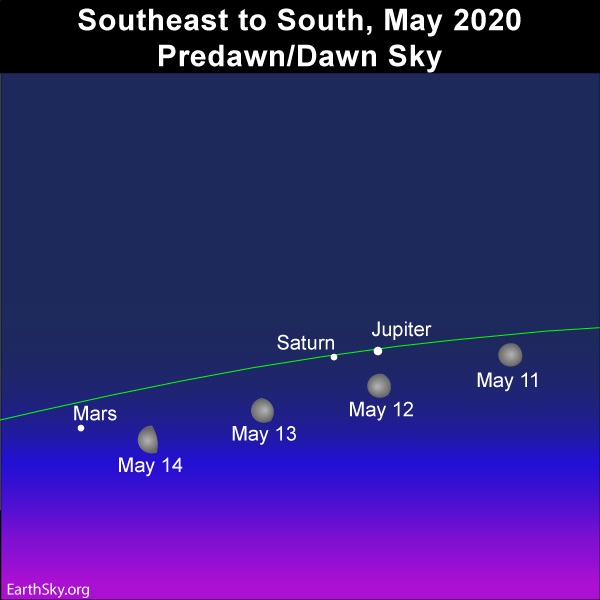I woke up around 4 am on 13 May 2020 and looked out and saw an impressive moon. It is in its third quarter and waning gibbous (this intermediate moon phase comes after the full moon and lasts until half of the Moon's surface is illuminated at third quarter moon. Waning means that it is getting smaller. Gibbous refers to the shape, which is less than the full circle of a full moon, but larger than the semicircle shape of the third quarter moon.
I didn't get a good photo unfortunately and the photo makes the sky much darker than it really was -
I then noticed 2 bright "stars" to the right of the moon and realised they were planets. Googled them and found they are Saturn and Jupiter.
Photo taken at 4.23 am.
Apparently Mars was also visible in this southern sky, but I didn't see it as by the time I looked for it, the sky was considerably brighter.
From
earthsky.org :
"These next several mornings – May 11, 12, 13 and 14, 2020 – let the waning moon introduce you to three bright morning planets. Jupiter is by far the brightest of the threesome, beaming some seven times more brilliantly than either Saturn or Mars. Jupiter also outshines all the stars. You’ll have no trouble identifying Jupiter. Mars and Saturn are fainter, but – like Jupiter, and like the moon – follow the approximate path of the ecliptic (sun’s path) across our sky. Thus the three planets, and the moon, make a small, graceful arc across our predawn sky. Mars and Saturn are almost equally bright (Mars is a tad brighter), and there are other ways of distinguishing Saturn from Mars. First of all, Saturn shines in close vicinity to Jupiter, and these two worlds will remain close together on the sky’s dome for the rest of 2020. Find dazzling Jupiter first, and that nearby bright world will be the ringed planet Saturn any time this year. Remember … you need a telescope to see Saturn’s rings."



























